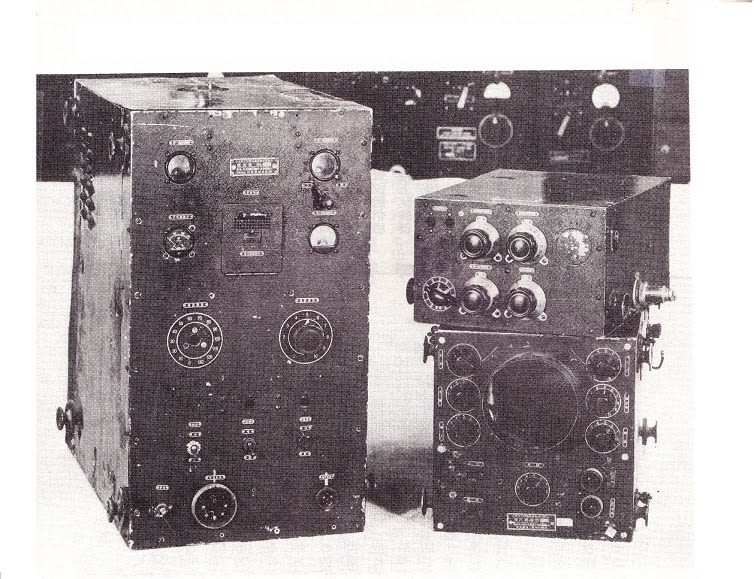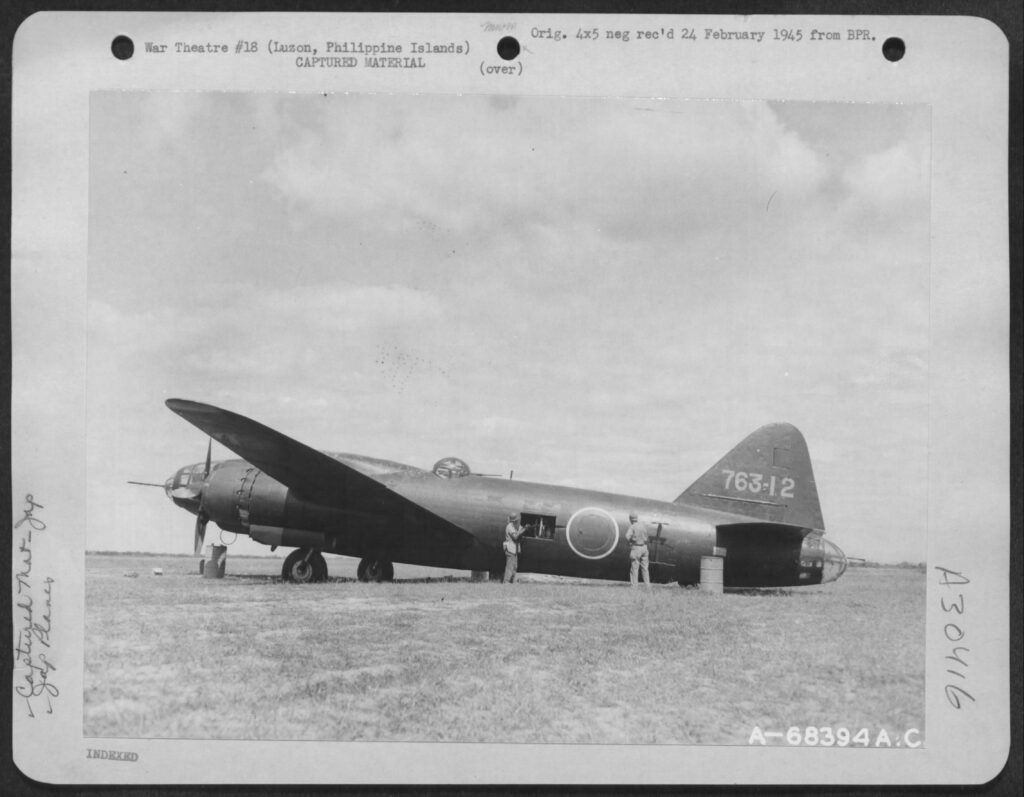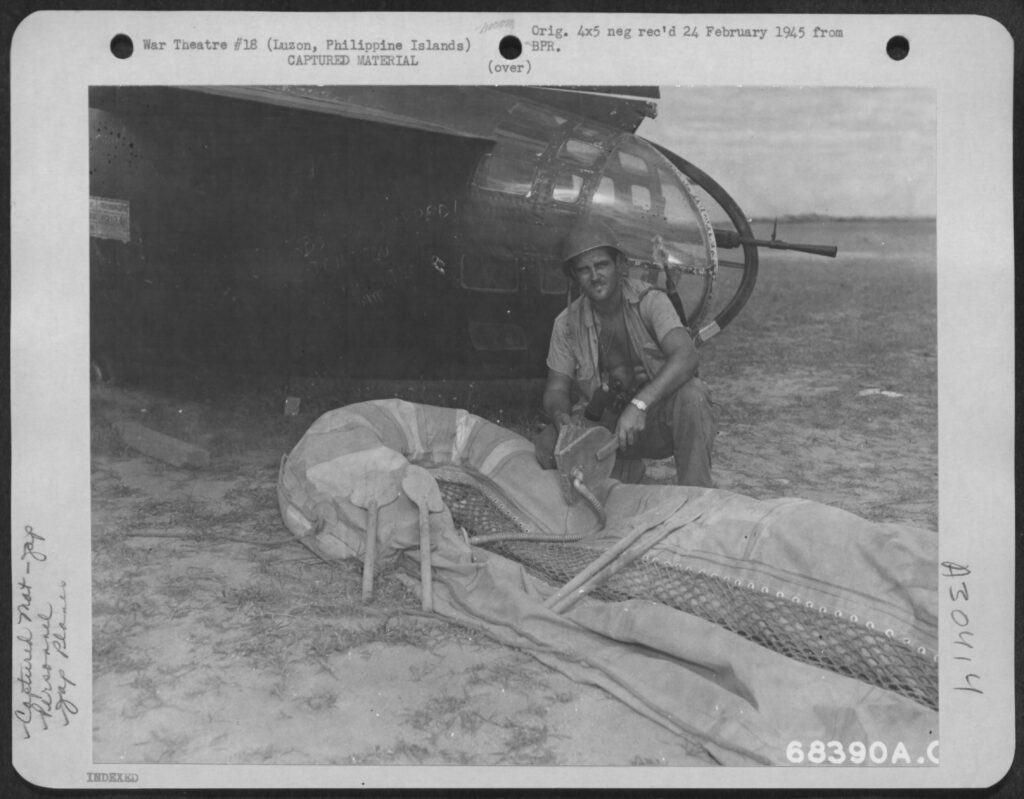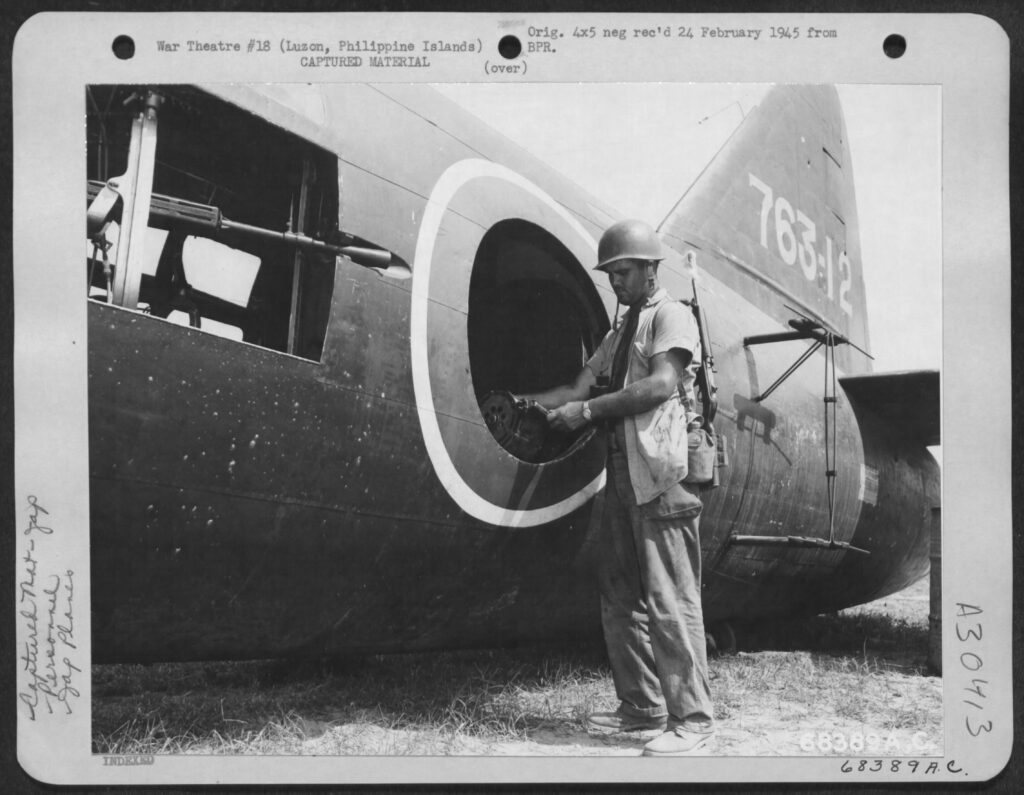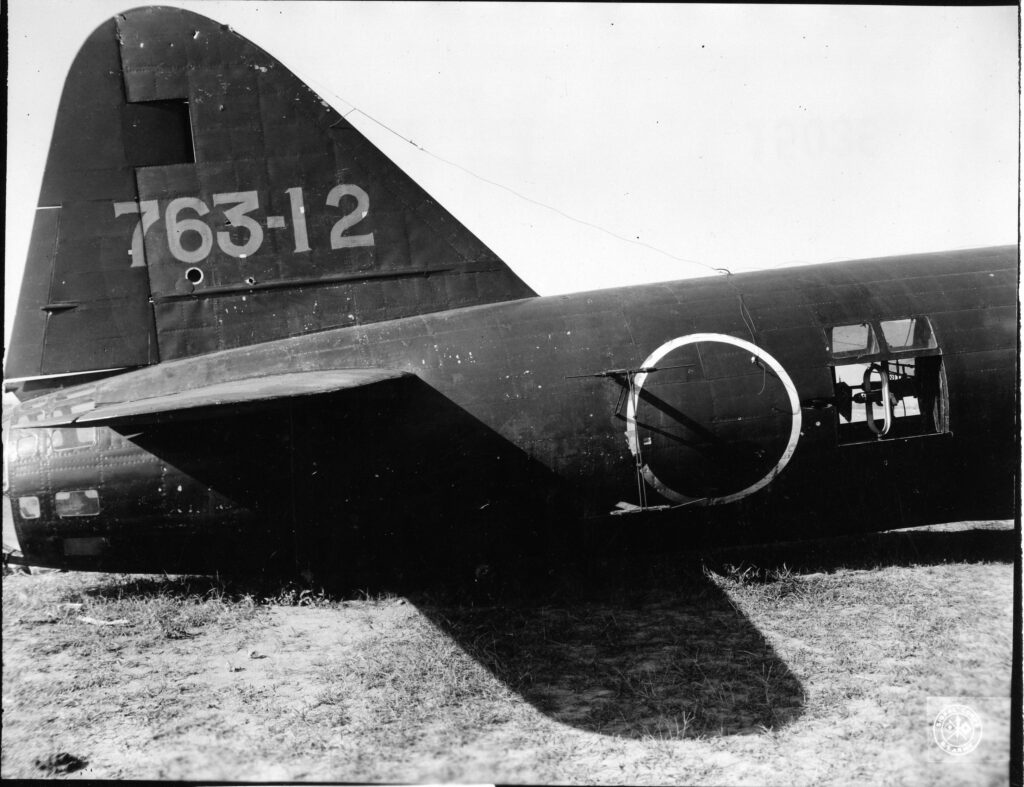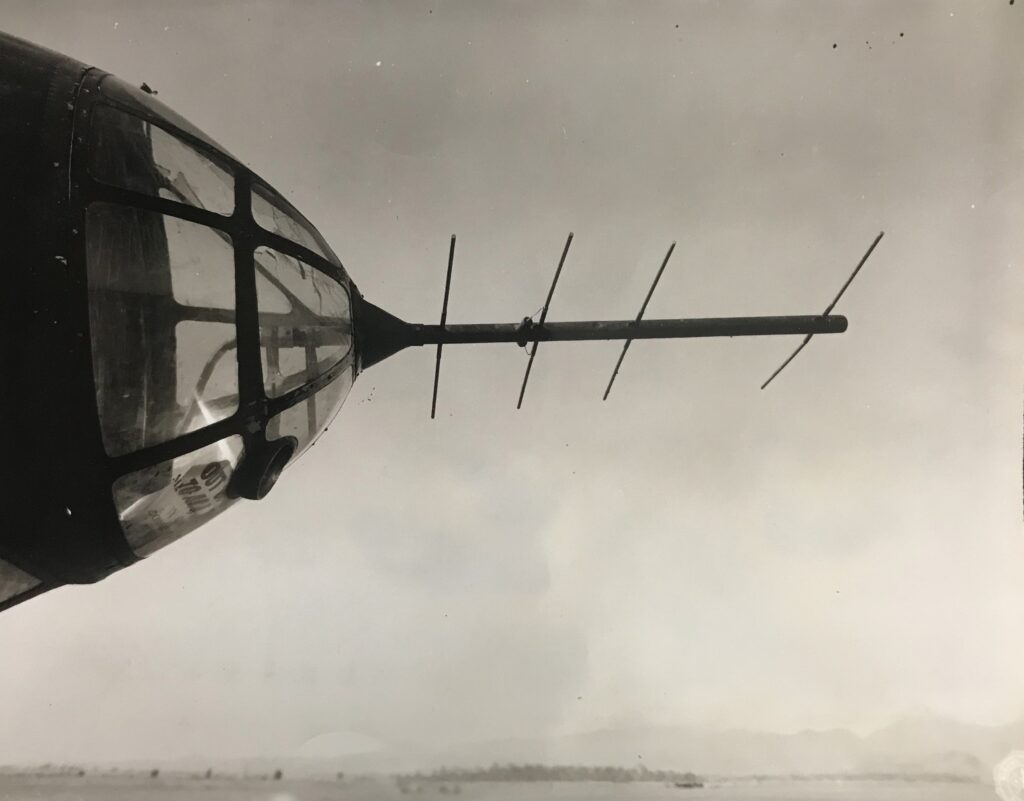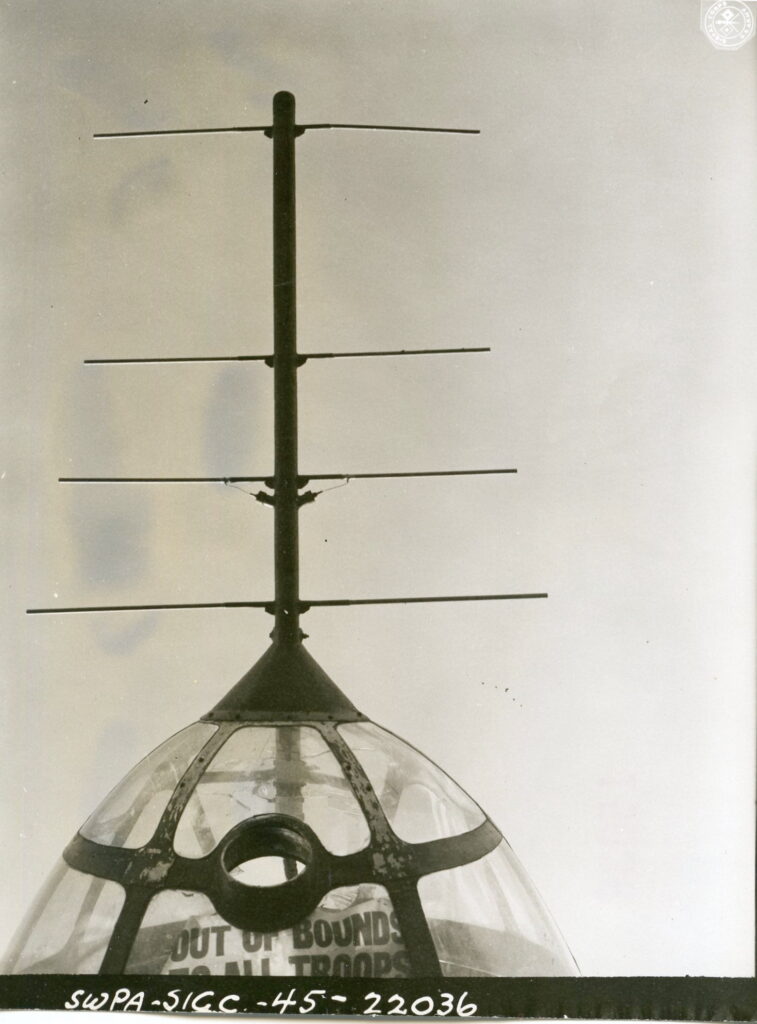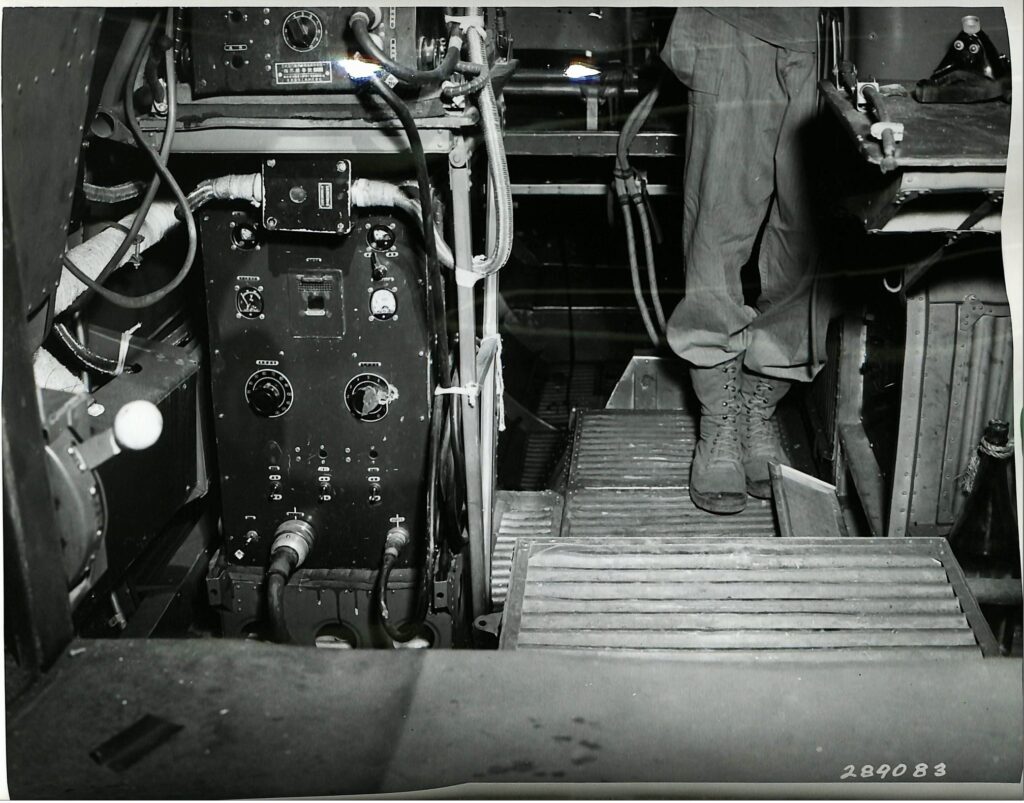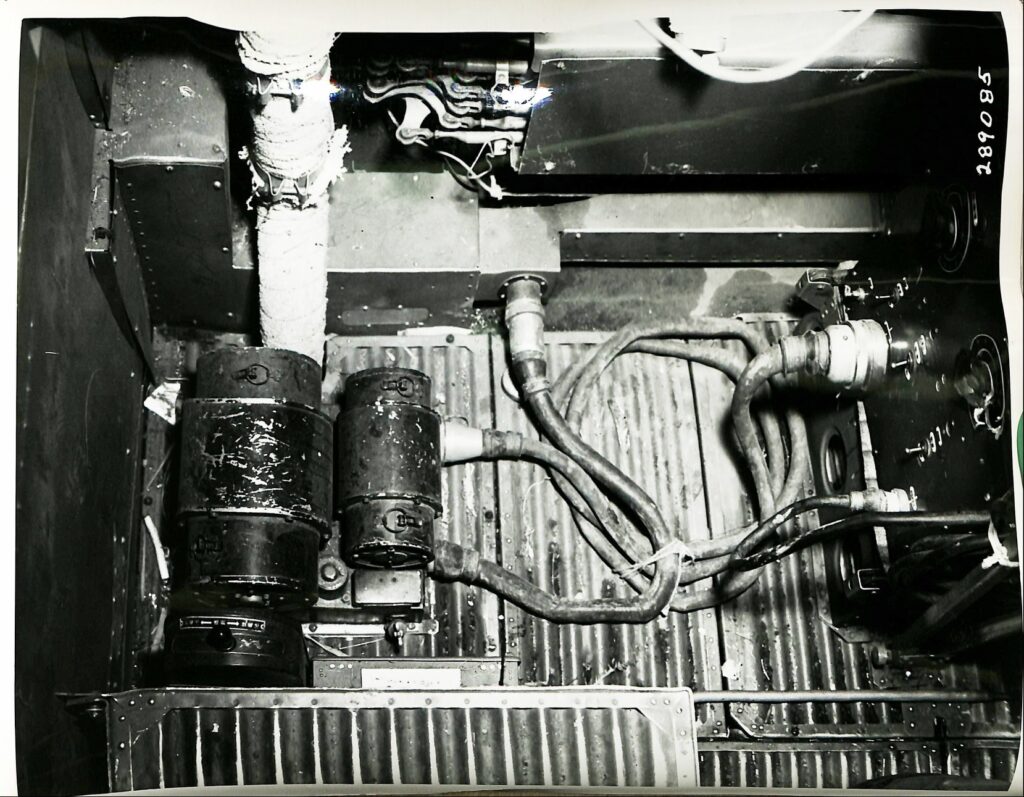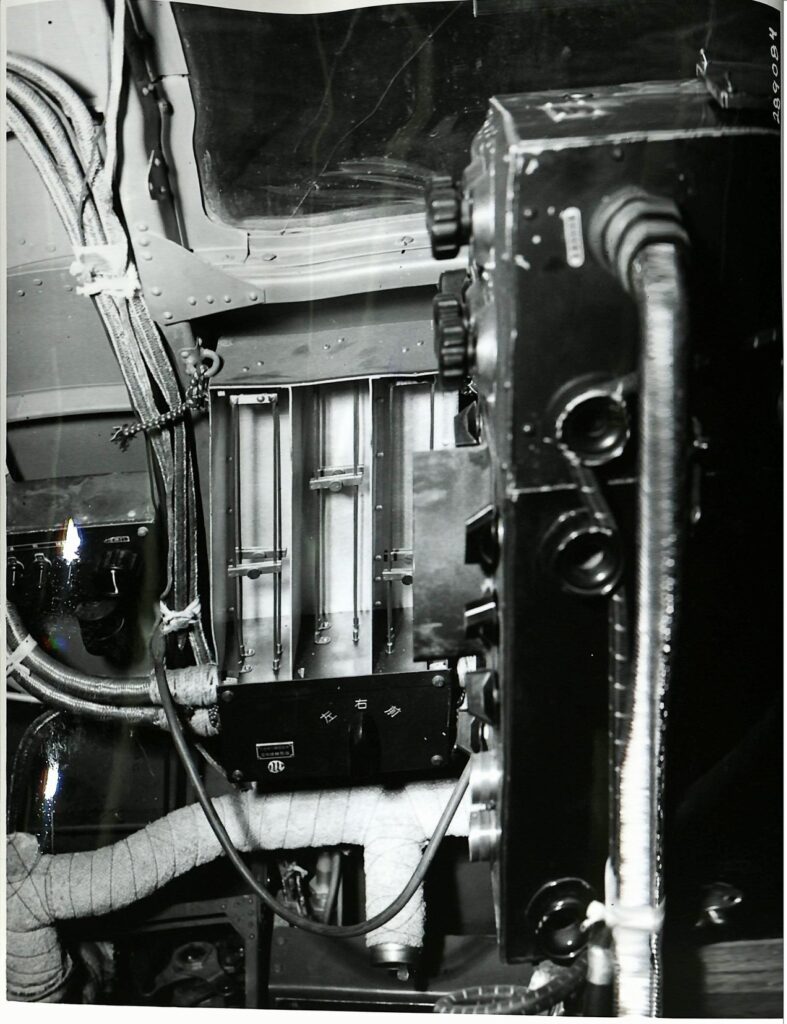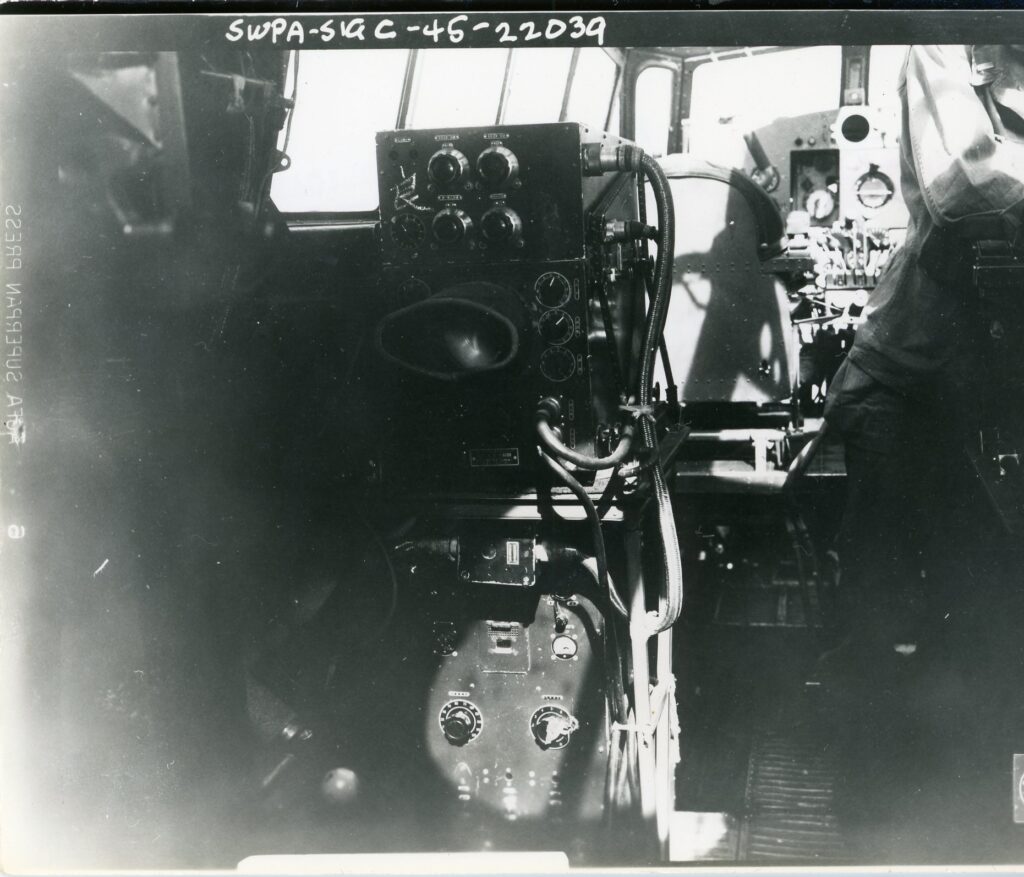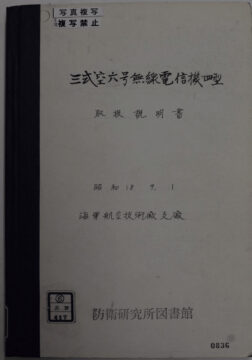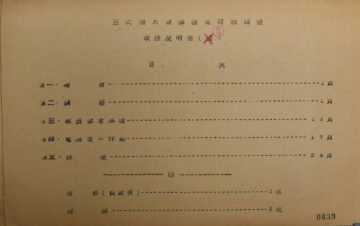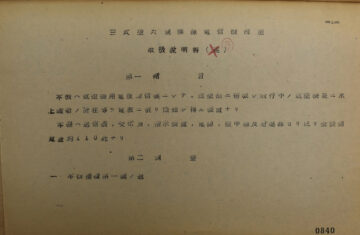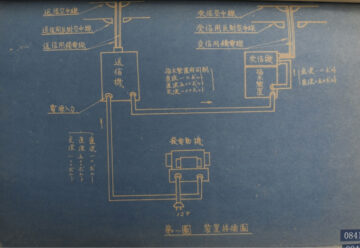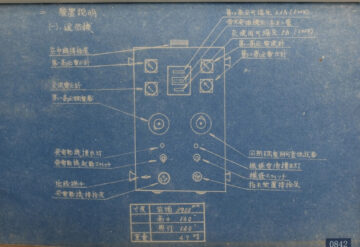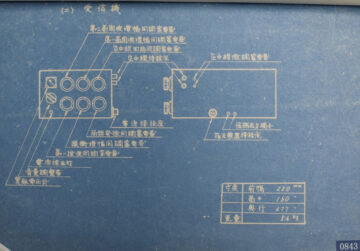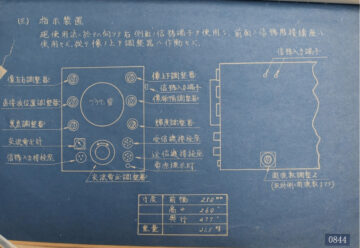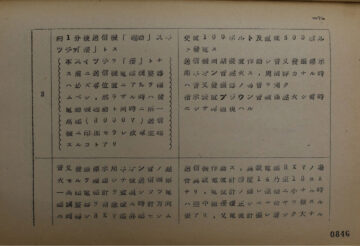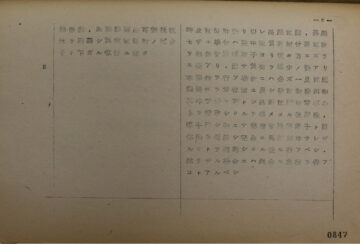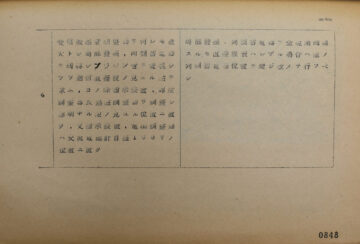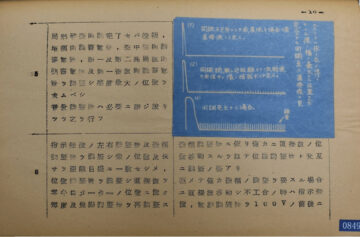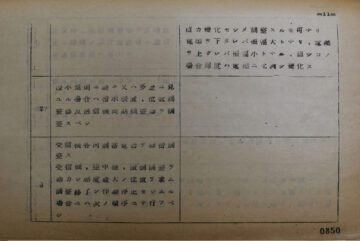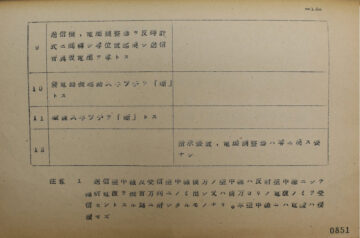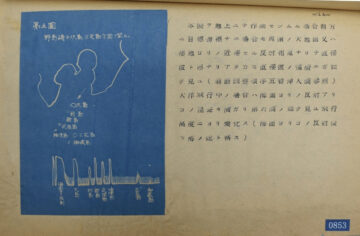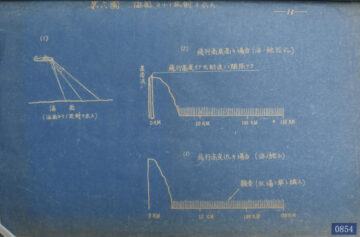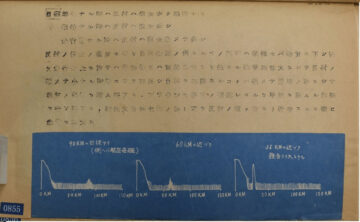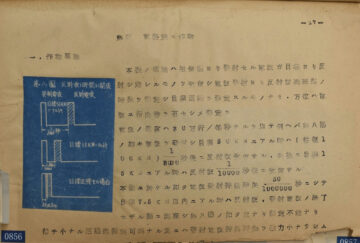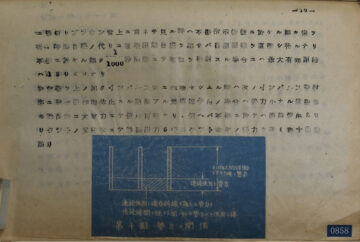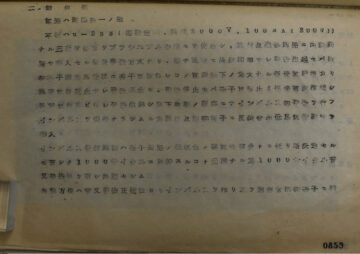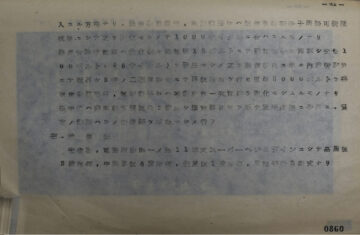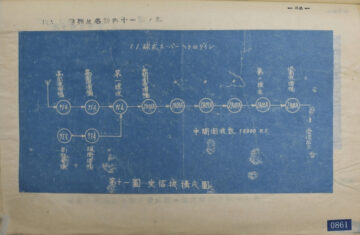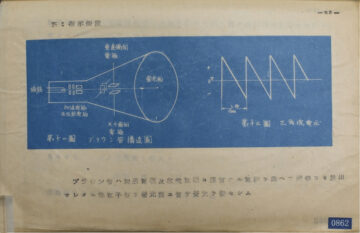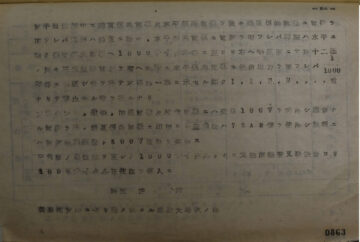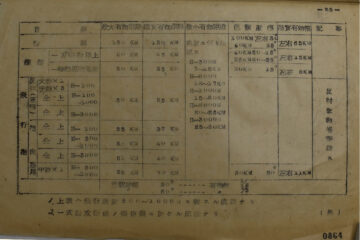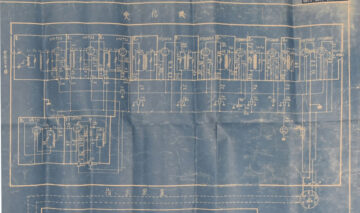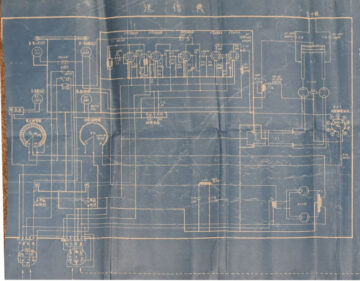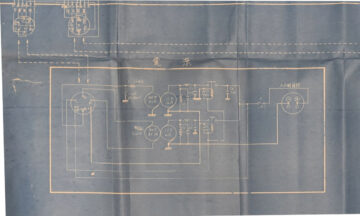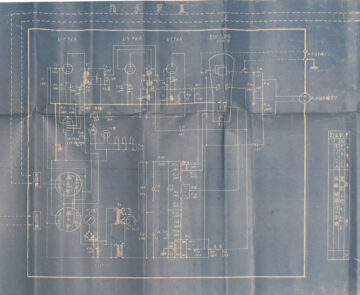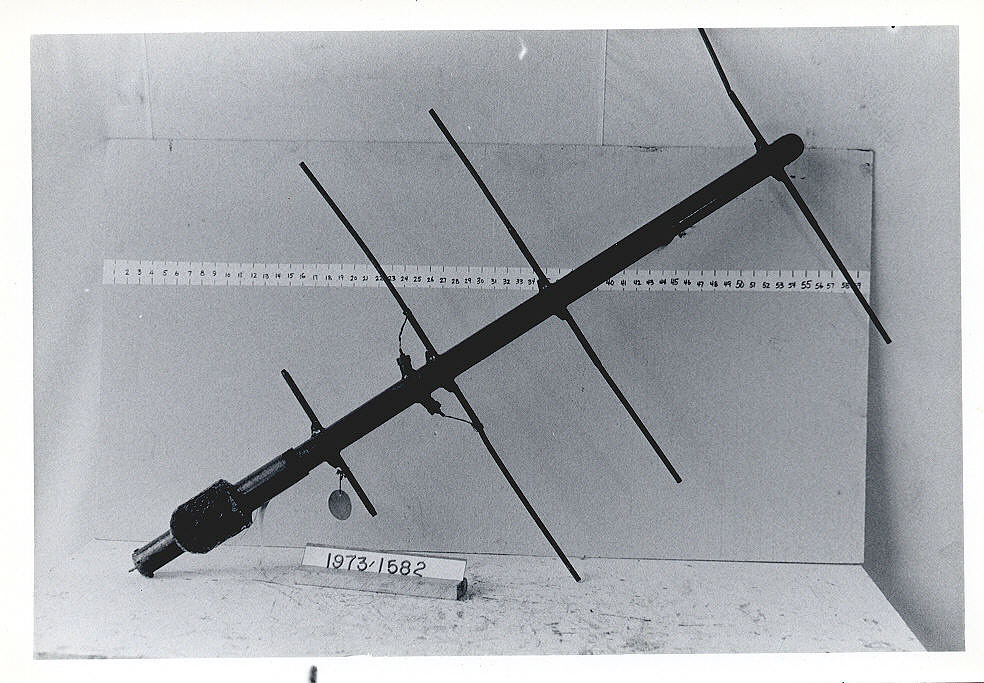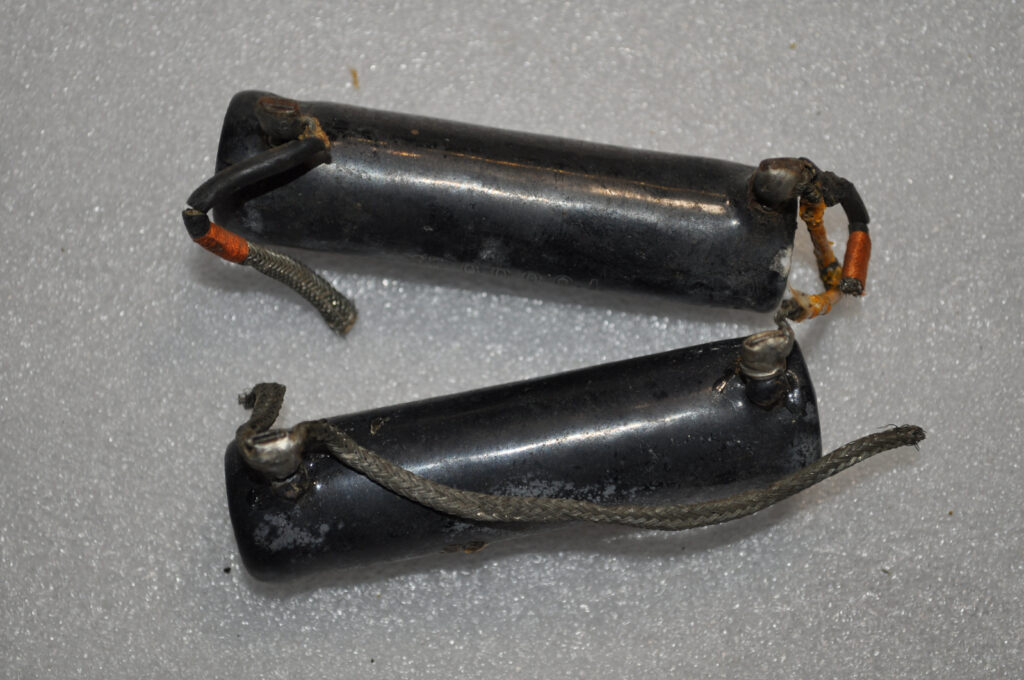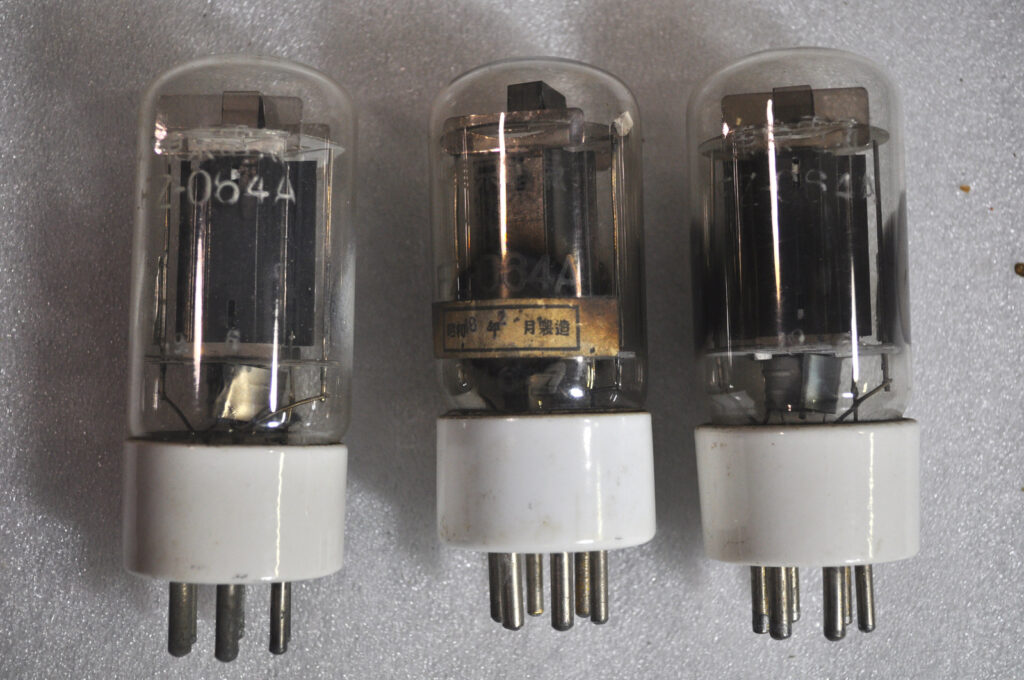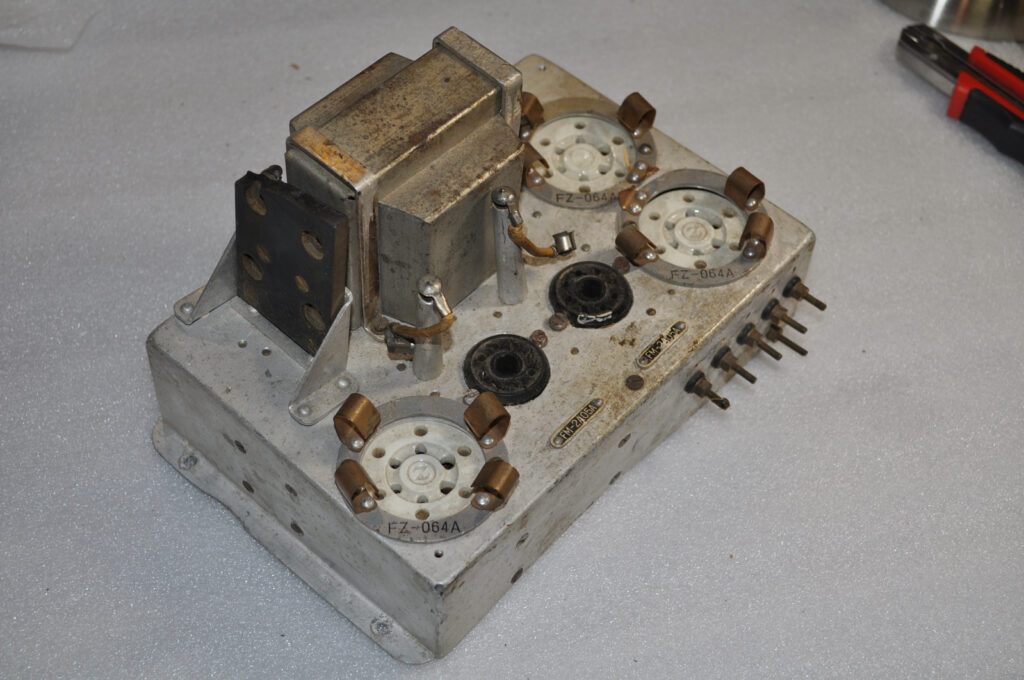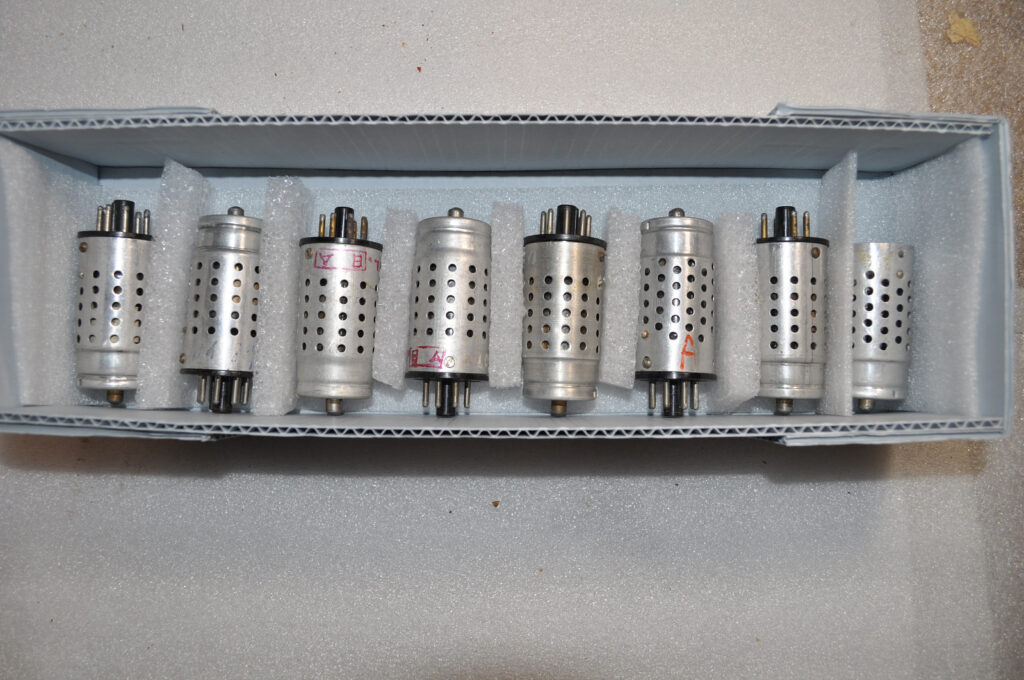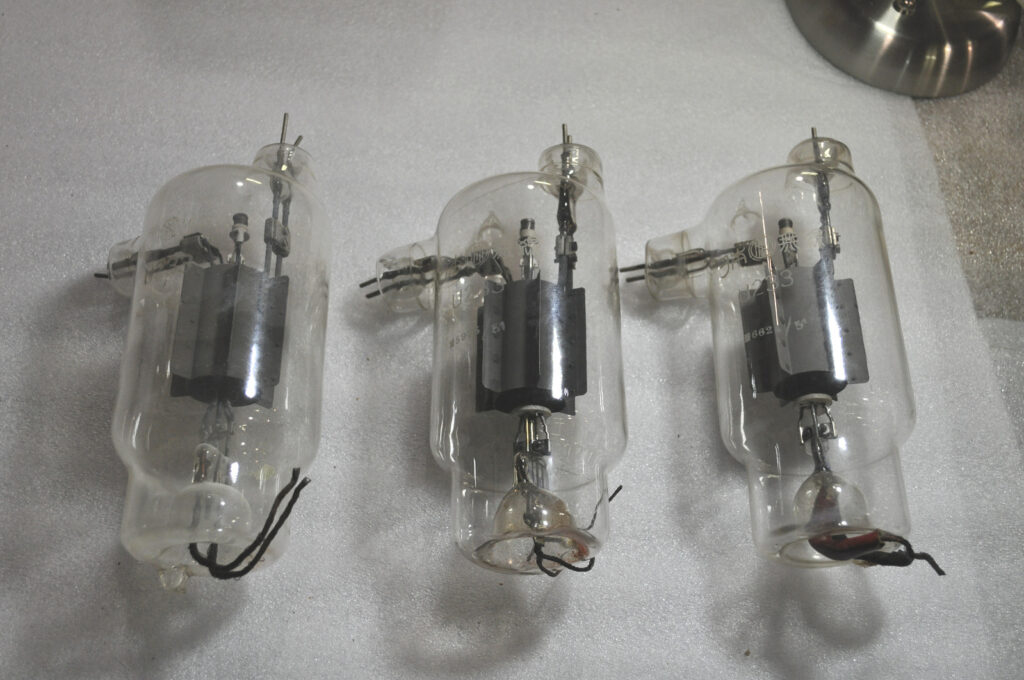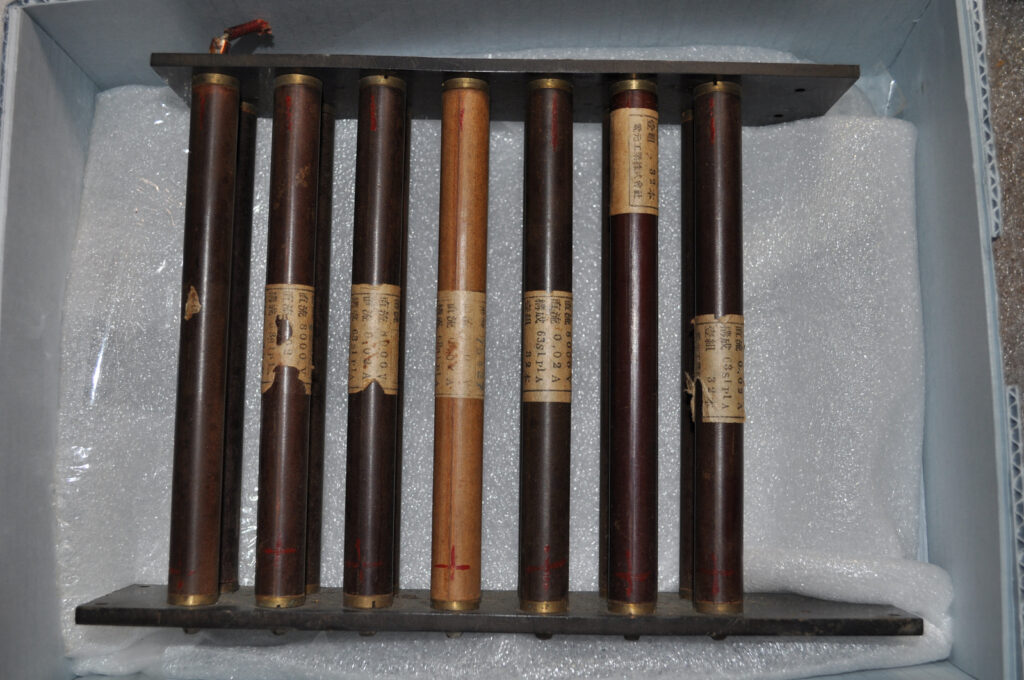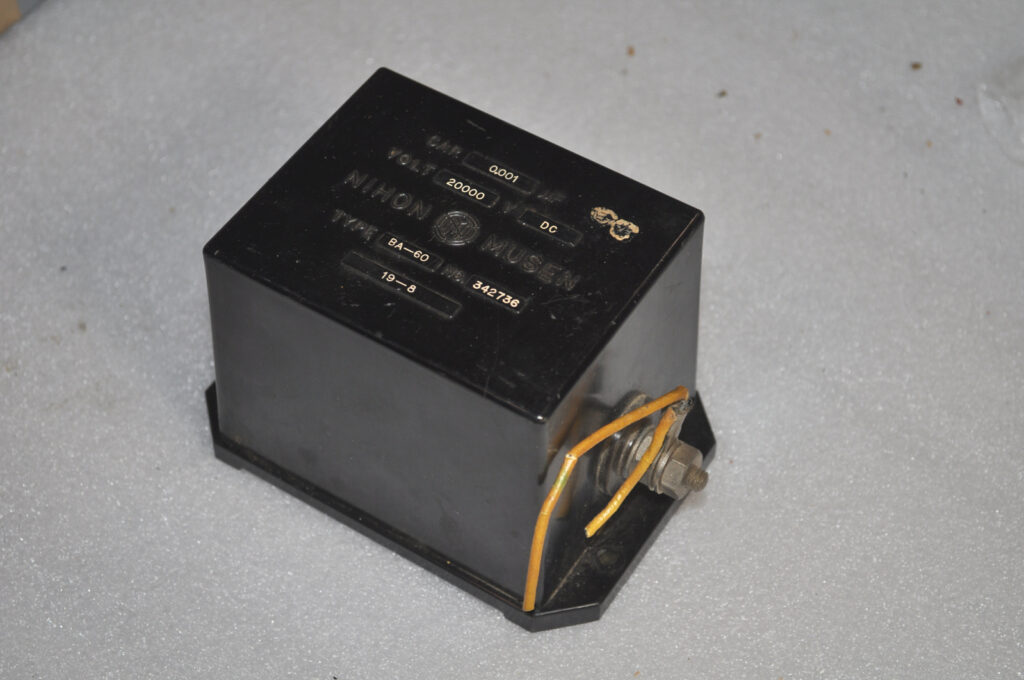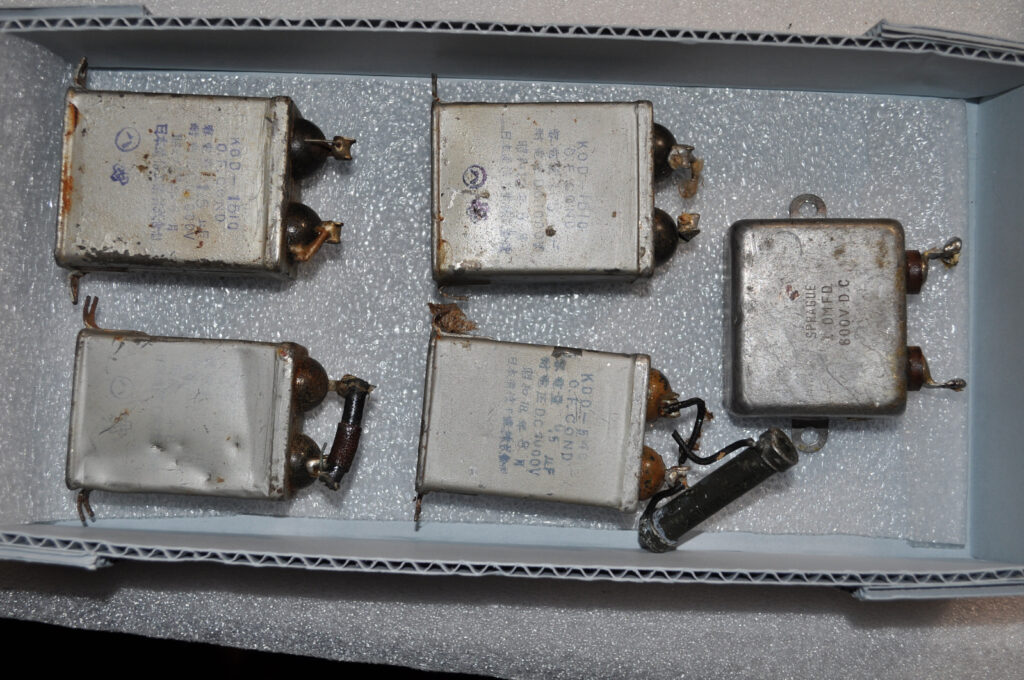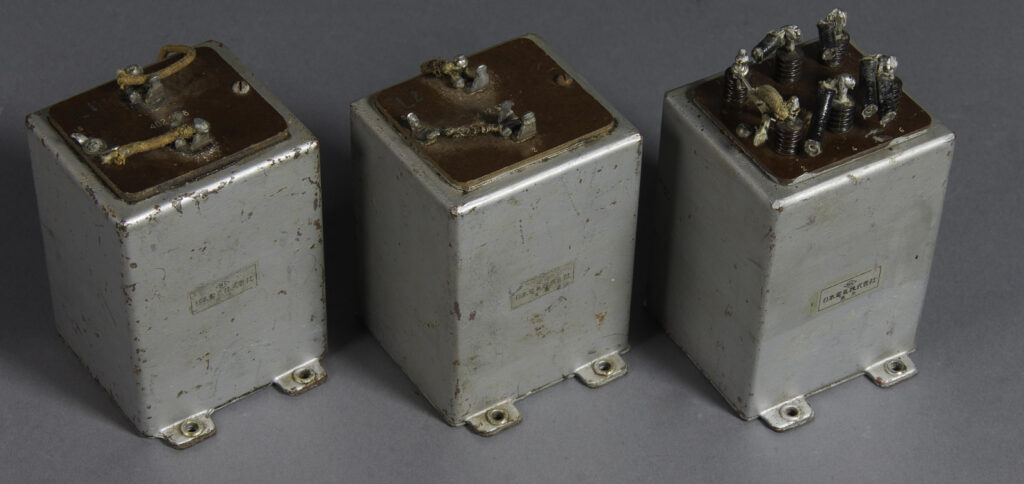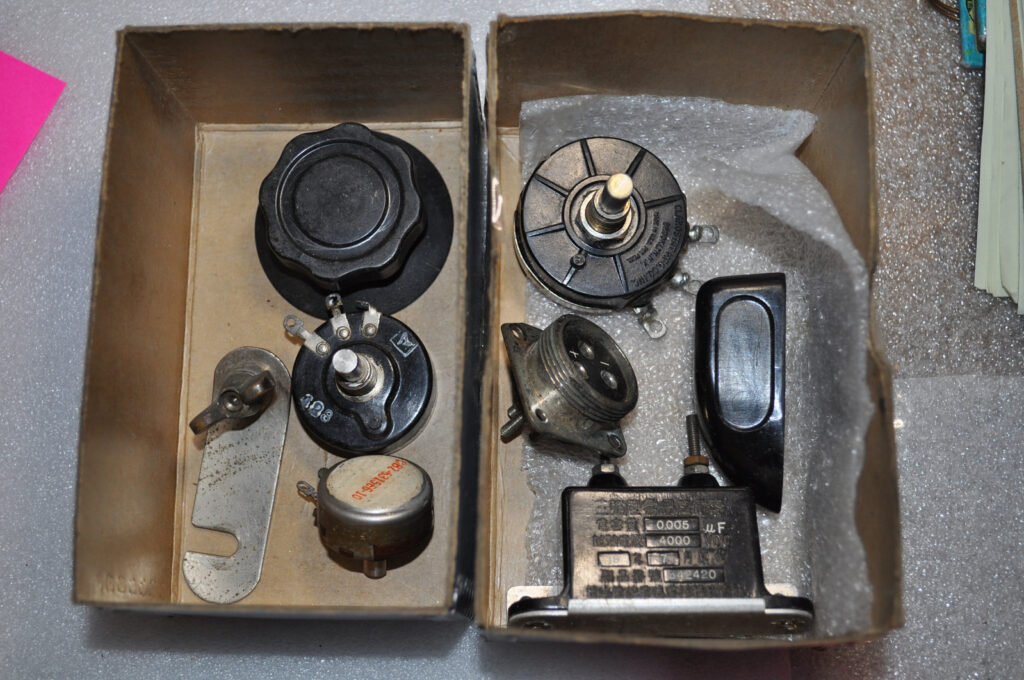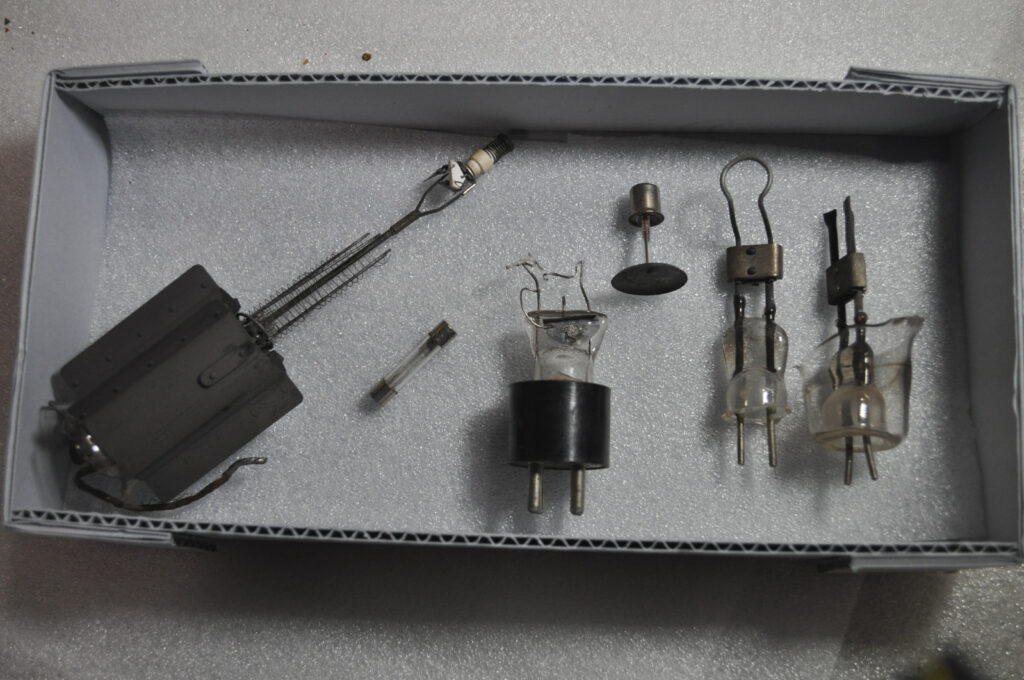The H-6, full designation Type 3 Ku 6 wireless telegraph Model 4 (三式空六号無線電信機四型, San-shiki kū-roku gō musen denshinki shi-gata) was a Japanese anti-shipping radar. The H-6 is probably the most well know and widely used radar of the IJNAS. It was developed by Yokosuka Arsenal and was mounted on a variety of planes to help detect ships during patrols.
Development
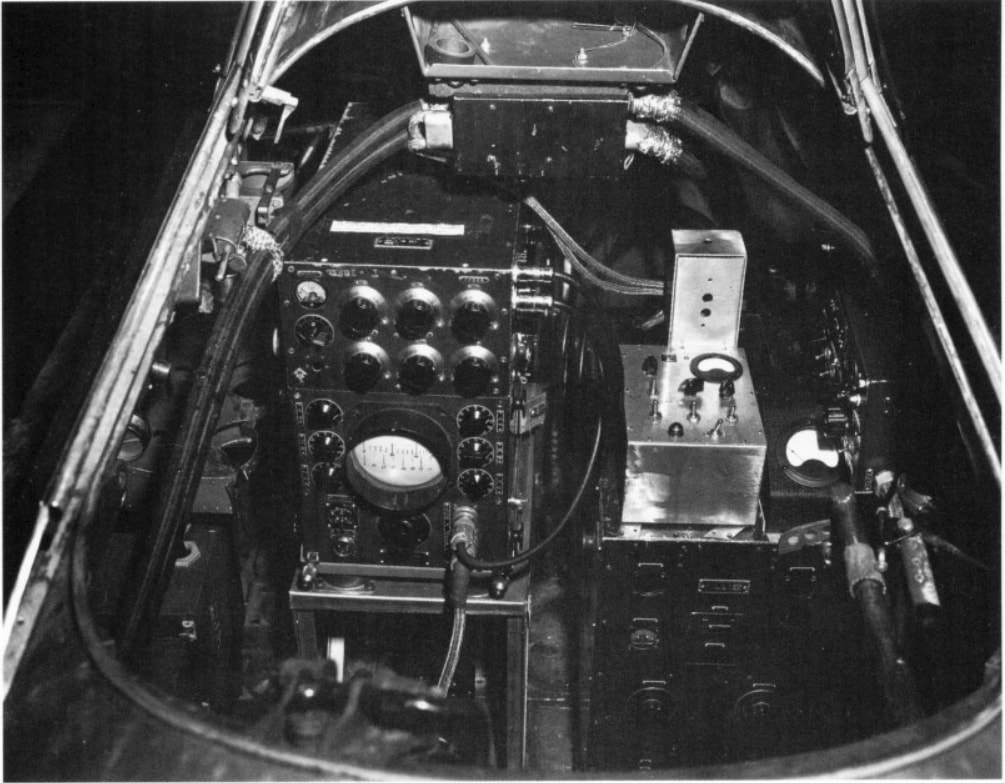
Development of the H-6 started in end 1941 by the electrical engineering department of the Yokosuka Naval Air Technical Arsenal ( 海軍航空技術廠, Kaigun Kōkū Gijutsu-shō). The device was originally planned to have a wavelength of 1 meter (300 MHz). However no suitable vacuum tubes were in production at the time, so the design was altered to operate at 150 MHz, resulting in a wavelength of 2 meter.
The prototype was completed in the spring of 1942 and operational testing began on a Kawanishi H6K flying boat. Problems occurred above 3.000 meter, where corona discharged occurred around the 10.000 volt power supply due to decreased humidity and atmospheric pressure. As a result, altitude restrictions for the radar were implemented. Development of the prototype finished spring 1942 and continued to be upgraded until august that year. The production units were introduced early 1943. Later on the voltage was reduced to 8.000 volt to reduce the discharging problems. Due to it’s large size and weight, the usage of the H-6 was mostly reserved for larger planes such as the Kawanishi H8K Mavis and Mitsubishi G4M Betty. It was however also installed in smaller, but dedicated patrol and reconnaissance aircraft such as the Aichi A13A Jake and the Kyūshū Q1W lorna.
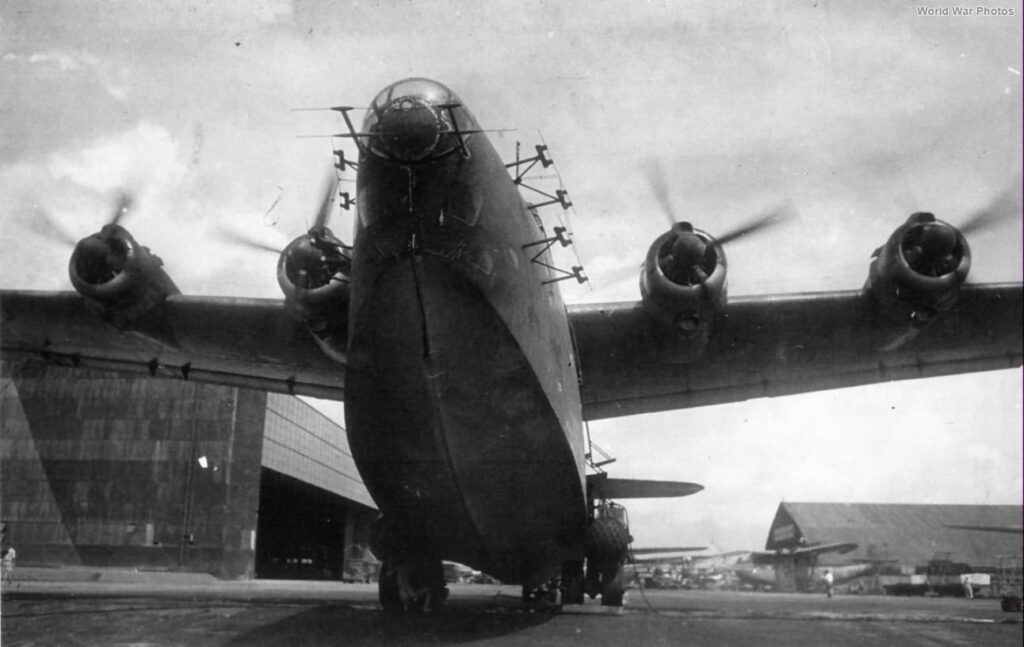
H-6 radar antenna installation on the nose of a Kawasaki H8K1, consisting of two frontal facing Yagi antennas and two dipole antennas on both sides of the fuselage. 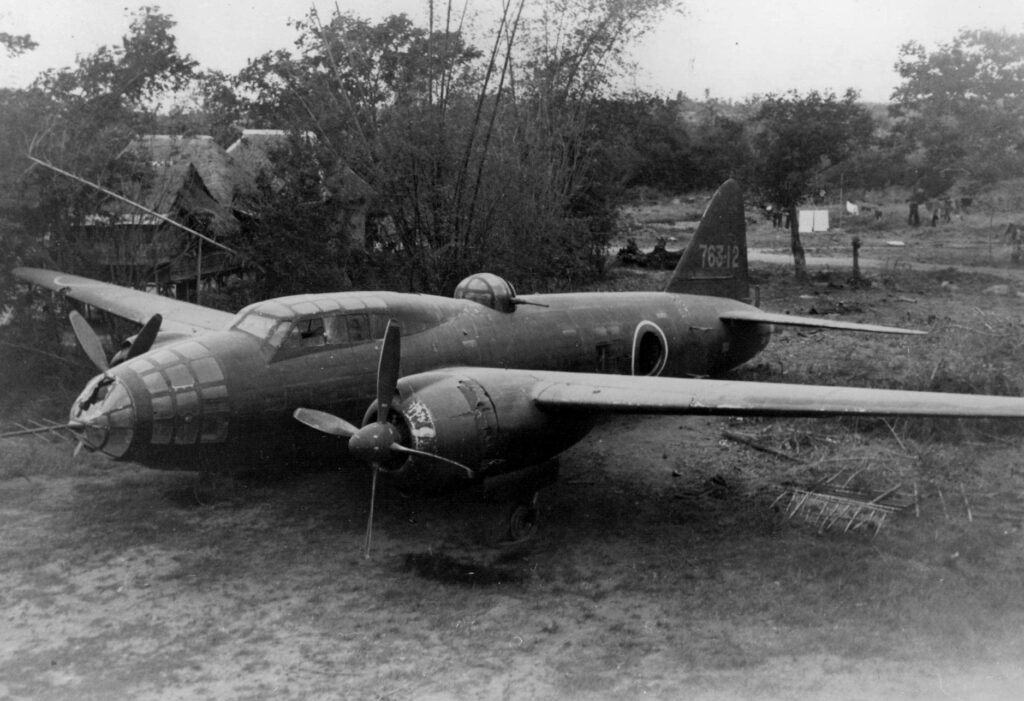
Mitsubishi G4M with a Yagi antenna on the nose and two dipole antennas on each side of the fuselage 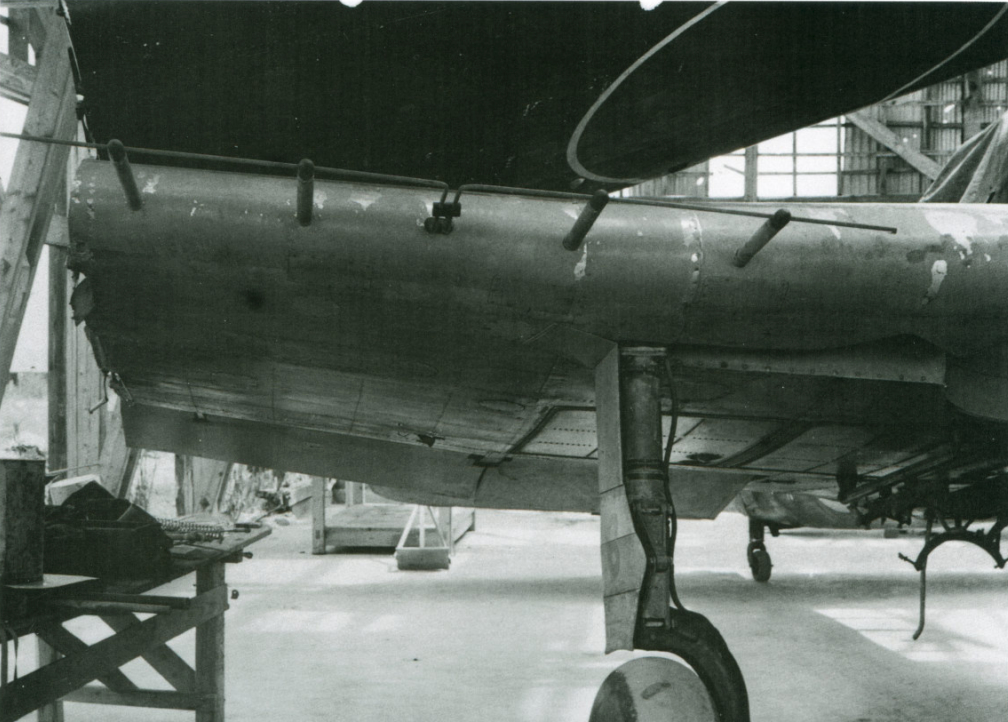
Yagi antenna on the leading edge of the wing of a Nakajima B5N2 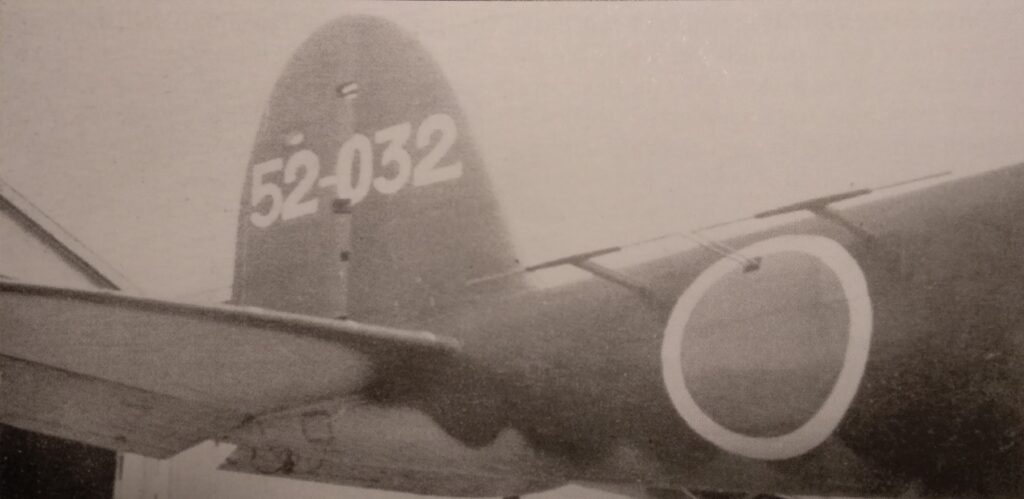
Dipole antenna on a Aichi A13A1 on the right side of the fuselage.
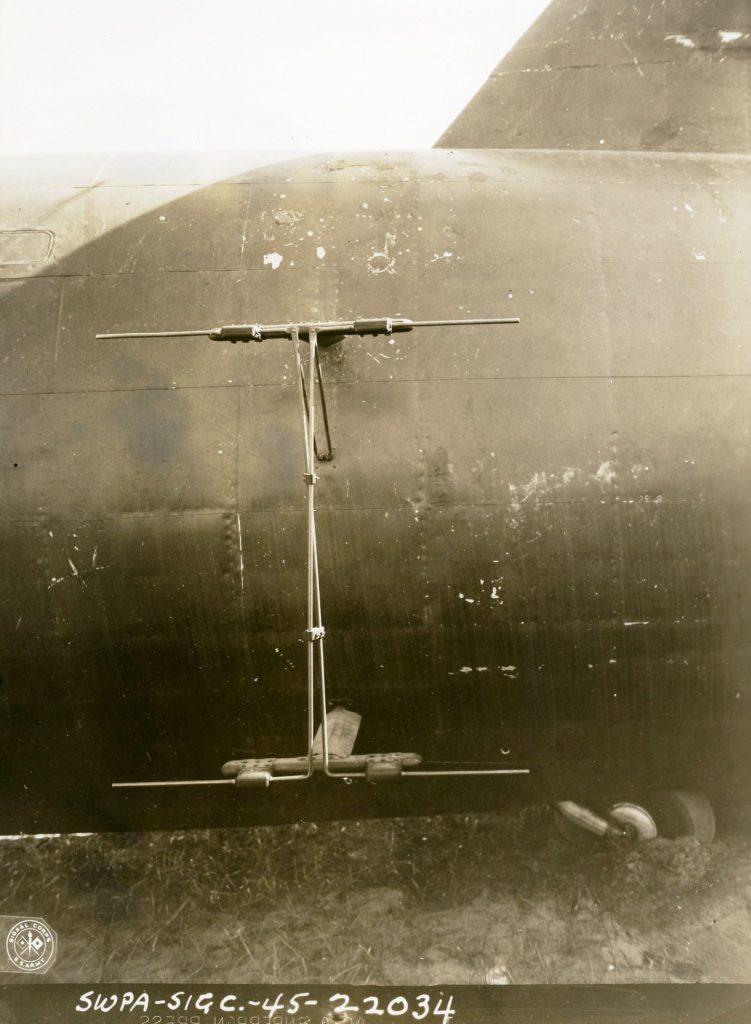
Dipole antenna on the side of a Mitsubishi G4M2, part of the H-6 radar installation 
H-6 radar antenna installation on the nose of a Kawasaki H8K1, consisting of a frontal facing Yagi antenna and two dipole antenna on both sides of the fusulage. 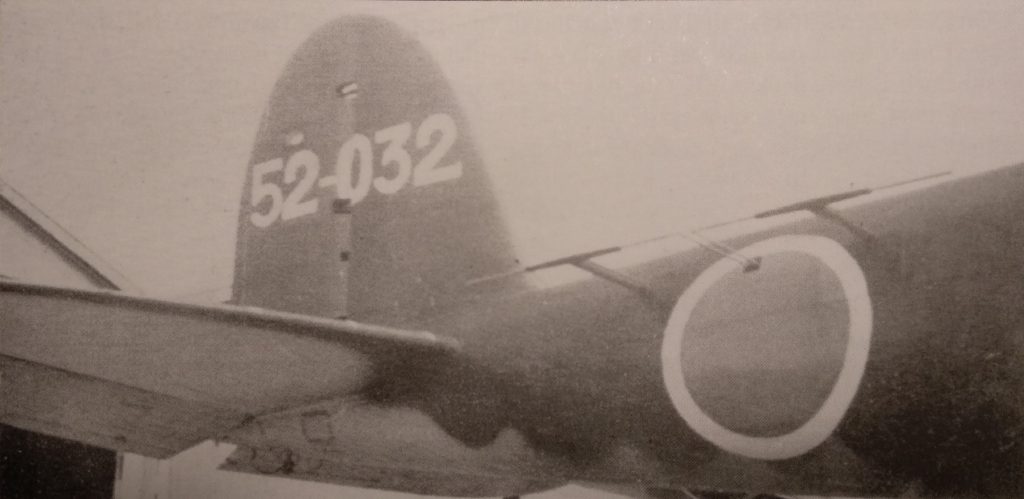
Dipole antenna on a Aichi A13A1 on the right side of the fuselage.
Deployment
One of the initial concerns of having radar installed was the flight performance reduction due to the additional drag caused by the antenna. The importance of radar wasn’t really understood by front line units and the original plan of two Yagi type antenna was difficult to justify. As a compromise, the Yagi antenna were replaced with two half-wavelength dipole antenna on both sides of the aircraft. The antennas were 1 meter in size (1/2 wavelength) and were placed 50 cm, or 1/4th of a wavelength from the fuselage, which would function as the reflector.
As the war went on, the importance of radar became more clear to front-line units. Simultaneously the development of Yagi antennas continued and with better understanding of air resistance, this resulted more aerodynamic antennas. As a result, a third antenna of the Yagi type was often installed as well on the nose of the aircraft or the leading edge of the wing.
In the last months of the war, the H-6 started to give way to the lighter and more compact FK-3 radar. The Japanese surrendered however soon after.
Mitsubishi G4M “763-12”
This G4M was captured at Clark airfield, Manilla on 24 February 1945. This airframe was equipped with a H-6 radar. Photo’s from various angles give a good overview of the layout of the antennas and the installation of the electronics inside.
Aircraft equipped with H-6 radar
| Aircraft | Notes | Model |
| Aichi H9A | ||
| Mitsubishi G3M3 Model 23 | Was used as a long range reconnaissance aircraft from 1943 onward. | |
| Mitsubishi G4M1 Model 11 | From 1942 onward this type was equipped with H-6 units for reconnaissance and submarine detection. | Type 22 |
| Nakajima B5N | Several aircraft were equipped with radar and served short to mid range patrol aircraft. | Type 3 |
| Nakajima B6N1/2 | Several aircraft were equipped with radar | Type 1 and 2 |
| Aichi E13A1 | Equipped with radar and used to search for enemy submarines. Otsu version also flew night reconnaissance missions. | Type 11 |
| Kawanishi H6K2 Model 11 Kawanishi H6K5 Model 23 Kawanishi H8K2 Model 12 |
Equipped with radar. Participated in convoy escort and submarine detection operations. | |
| Kawanishi H8K2 Model 12 | Equipped with radar and used to track and attack enemy submarines. | Type 12 |
| Kawanishi E7K2 Model 2 | Used for patrol operations and submarine detection. | |
| Kyūshū Q1W1 | Used to track and destroy submarines, and escort operations. | |
| Mitsubishi Q2M1 (planned) | Planned patrol aircraft, to be equipped with radar. | |
| Kyūshū Q3W1 (planned) | Planned patrol aircraft, to be equipped with radar. | |
| Yokosuka P1Y | Type 11 | |
| Nakajima J1N1 |
Technical Specifications
| 三式空六号無線電信機四型 / Type 3 Ku 6 wireless telegraph Model 4 | ||||
|---|---|---|---|---|
| Designation | H-6 | |||
| Object | Patrol and Search | |||
| Research | started | November 1941 | ||
| Finished | August 1942 | |||
| Operational status | In use at end of war | |||
| Installation | Large and Small Aircraft. Observer’s Seat | |||
| Frequency | 2 meter / 150 MHz | |||
| Power Output (Peak) | 3kw | |||
| Pulse Length | 10 µs | |||
| Repetition Frequency | 1000 c/s | |||
| Weight | 110 kg | |||
| Units build | ~ 2000 | |||
| Transmitter | Oscillation Circuit | Blocking Oscillator | ||
| Oscillator Valve | U-233 x2 | |||
| Receiver | Intermed. Freq. | 10 mc | ||
| Detector | 1st UN-95A | 2nd FU-2A05A | ||
| Local oscillator | UN-955 | |||
| Scope Representation |
Diameter | 120 mm | ||
| Scanning Axis | Linear | |||
| Scale | Mechanical | |||
| Antenna | Type | Head: Yagi | Sides: Folded Doublet | |
| Gain | 16db | 6.5db | ||
| Beam Angle | Horiz. | θƒ = 30° | θƒ = 28° | |
| Vertical | θƒ = 35° | θƒ = 30° | ||
| Max. Range (Max.Effective Scale) | 150 km theoretical 90-110 km against large ships such as aircraft carriers 70 km agains aircraft 25 km small surfaced submarines |
|||
| Minimum Distance | 3 km at 1000 m | |||
| Accuracy of Range | ≃± 5% | |||
| Distance Discrimination | 4~6 km | |||
| Accuracy of Bearing | ± 3° | |||
| Angle Discrimination | ≃ 60° | |||
| No. Of Operators | Radar Technician on large planes Plane Observer on small planes |
|||
| Device | Dimensions | Weight |
| Transmitter | 54 x 30 x 54 cm | 49 Kg |
| Receiver | 16 x 26 x 50 cm | 8.4 Kg |
| Indicator | 30 x 26 x 50 cm | 22 Kg |
Reports of the U.S. Naval Technical Mission to Japan, 1945-1946. Series E-02 Japanese Airborne Radar
Excerpt of “Reports of the U.S. Naval Technical Mission to Japan, 1945-1946. Series E-02 Japanese Airborne Radar” page 5-7, detailing the electric schematic of the H-6 Radar
Manual
A manual on the construction, maintenance and operation of the H-6 radar, in Japanese.
Various components
Sources
- Mikesh, R. C. (2004). Japanese aircraft equipment 1940-1945. Atglen, PA: Schiffer Publ. ISBN 978-0764320972.
- Ishiguro, R., Januszewski, T., & Karnas, D. (2018). Japanese anti-submarine aircraft in the Pacific War. Sandomierz: Stratus. ISBN 978-8365281395.
- 3式空6号無線電信機4型(H-6). (December 29, 2018). Retrieved from http://minouta17.livedoor.blog/archives/18022295.html
- 記事NO. 8473に返信をします. (n.d.). Retrieved from http://www.yokohamaradiomuseum.com/cgi-bin/imgboard.cgi?bbsaction=disp_rep_form&amode=&page=1&blood=20161013134843&parent=8473
